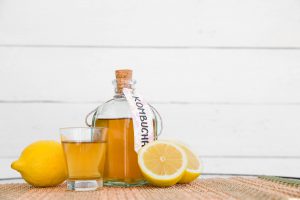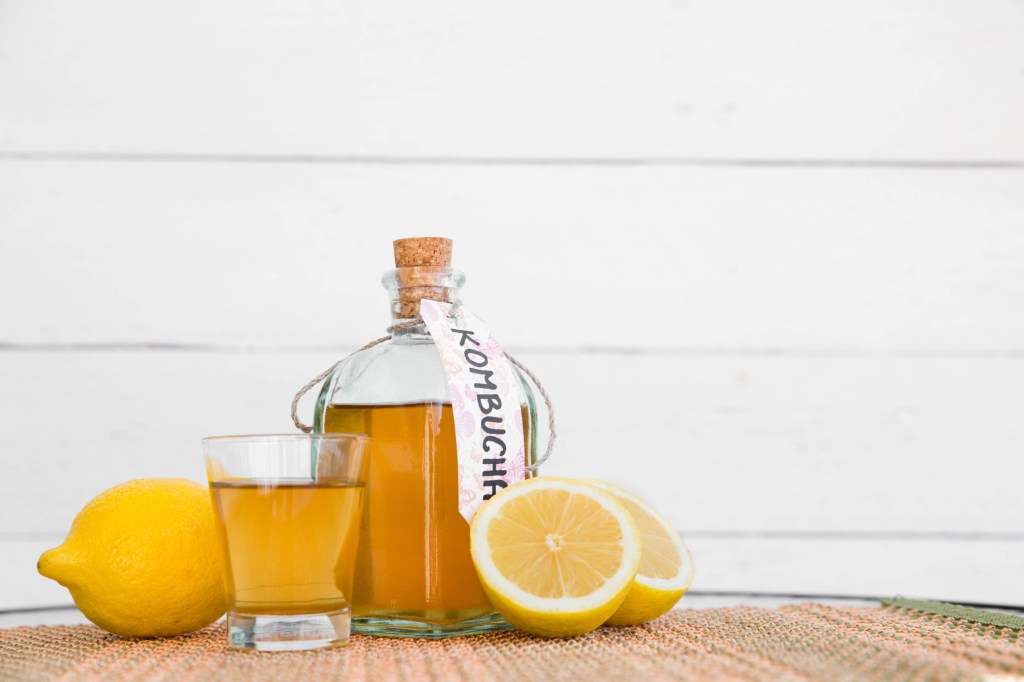
Kombucha is shaping up to be the next big thing in the convenience store beverage landscape as increasingly health conscious consumers continue to turn to lower sugar drinks.
The most recent state of the industry report from the Australasian Association of Convenience Stores says that, although it is coming off a relatively low base, kombucha sales through the channel grew by an impressive 37% between 2017 and 2018.
All the evidence suggests that this trend of strong growth is set to continue. Global measurement company, Nielsen, and medical research company, The George Institute, collaborated recently to look at how consumers were changing their purchasing habits when it comes to sugar-heavy products. The data revealed that nearly 30% of Australians were very concerned about sugar consumption, and that more than 20% of sugar-concerned Australian consumers were willing to pay more for low sugar products.
In is against this background that kombucha has emerged over the last few years. Kombucha is basically a type of tea that is put through a fermentation process that both gives it a unique taste and allows good bacteria to form, offering consumers a healthy dose of probiotics and antibiotics which are said to benefit the brain, heart and stomach. The healthy bacteria found in kombucha apparently helps people’s digestive tracts absorb nutrients and fight sickness.
As it has developed a more mainstream appeal, a wide variety of kombucha flavours have been developed including passionfruit, raspberry, lemon, cola, peach ginger and many, many more.
With a strong appeal to busy and active consumers, kombucha is a good fit with the convenience channel, and its more premium price point offers operators a chance to increase customer spend.
One of Australia’s market-leading kombucha makers, Remedy Kombucha, said convenience has an exciting role to play in the continued expansion of the product’s appeal.
“Kombucha penetration is at about 10% nationally so that means there are a lot of untapped shoppers out there,” said Remedy co-founder, Emmet Condon. “Kombucha currently occupies between one and two shelves of space in most retailers, and it’s growing exponentially year on year,” he said.
Mr Condon said that, as awareness and penetration grows, people will continue to switch to kombucha from other products, and it will also draw completely new users into the beverage category.
“This might be the consumer who only expects to find flavoured milk, soft drinks and energy drinks in the fridge and is pleasantly surprised to find a healthy alternative.
“While kombucha is becoming more mainstream with growing distribution into major grocery, there are still plenty of new customers to reach.”
Mr Condon suggested operators look to range a minimum of four kombucha flavours in the main fridge and also try to get product in fast lane fridges to ensure exposure to the shoppers who don’t always visit the back of the store.
The rapid growth in the popularity of kombucha has seen the emergence of several companies developing an ever growing list of flavours. While convenience stores are commonly restricted by limited fridge space, companies like Liquefy Health – which produces the premium OK Kombucha – says it is vital that operators stock a range of brands.
Ok Kombucha assistant brand strategist Allison Bradley said: “Every kombucha has its own flavour profile…it is like beer or coffee, they brew their own kombucha, thus having its own unique flavour and personality”.
“Consumers know which ones they like and which ones they don’t, so providing a range is important.”
Ms Bradley said that while the functional beverage market is a very competitive one, kombucha is very much on the rise so that brands which offer a point of difference and are able to attract new consumers should be given fridge space.
According to Soulfresh, which is responsible for the popular Lo Bros Kombucha brand, the Australian kombucha market has seen a 173.8% increase in the past three years, and represents a huge and growing opportunity that simply cannot be ignored.
Soulfresh communications manager Chloe Sutton said: “Convenience is as important as the grocery channel for kombucha brands as it stimulates trial and also aligns with the usage occasion for consumers – single use, on the go, with lunch or a snack”.
“Similar to soft drinks and other beverages, bundles are a great opportunity with this product … for example, pairing kombucha with a protein bar, or a sandwich,” Ms Sutton said.
She says another good way to drive trial and sales of new brands is to use price offers on launch.
Amanda Carrol, the owner of Rok Kombucha, agrees that stores need to work hard on in-store promotion to encourage trial of the product and maximise the opportunity.
“Gaining fridge space is extremely difficult but C-Stores need to understand that consumers are looking for real and authentic products and they need to be given the choice,” she said. “By promoting kombucha as the healthy alternative to sugary soft drinks, operators will have the most success.”
Ms Carrol said there is an increasing number of ‘kombucha-like’ products out there, some more authentic than others.
“C-Stores need to give their customers the choice of both lower quality ‘kombucha-like’ offerings and handcrafted, authentic alternatives,” she said. “The world is moving away from soft drinks and juices so C-Stores need to increase their kombucha offerings to meet this demand.”
Another kombucha producer, Hemp Oz, says that this shift towards low-sugar health beverages such as kombucha was so widespread that it wasn’t limited to a single demographic.
Hemp Oz Founder and CEO John Leith said: “It appeals to many different consumers, men and women, young and older, all who are looking for low or no-sugar alternatives to carbonated soft drinks”.
“Kombucha is the perfect alternative – sparkling, thirst-quenching and deliciously refreshing.”
He said that it is a product that naturally sells particularly well around mealtimes.
“Drinking kombucha around lunchtime delivers the beneficial bacteria to the gut to encourage healthy digestion,” he said. “Bundling with a healthy lunchtime meal would be ideal for customers looking for a quick, yet nutritious meal on the go.”
Hemp Oz Kombucha said its point of difference is that it is Australia’s first kombucha made with the superfood hemp, and that it is unpasteurised.
For its part, Remedy says it is constantly adding to its repertoire and, in the past six months, has launched Remedy Switchel made with a base of raw organic apple cider vinegar and fresh organic ginger, and Remedy Coconut Water Kefir which is a hand-crafted, live cultured coconut fizzy water.
“We’re big on new product development at Remedy and reaching those untapped markets is definitely about innovating and pulling together a range of products and flavours to suit a variety of people and occasions,” said Remedy’s Emmet Condon.
“We have another couple of new product launches to come this year so we’re on the move and definitely shaking fizzy drinks up!”
While kombucha drinks are sold in a range of sizes of cans and bottles, Chloe Sutton from Soulfresh said the kombucha category has a higher index of glass packaging than many other beverages as it represents a premium offering.
“The 330ml bottles continues to be the most popular Lo Bros product size in convenience as it is a natural switch out for most soft drinks,” she said. “It also is resealable which is great for people travelling in cars. “
With kombucha being promoted as a quick way for people to improve their gut health and overall wellbeing, its appeal to busy and health-conscious convenience customers is clear. Operators seeking to tap into the potential for further growth need to embrace the product and allocate it sufficient space in the fridge and stock a sufficient range of brands and flavours to ensure consumers can meet their needs.
Home run
As the kombucha boom really takes hold, an innovative Australian is offering consumers an affordable way to make the beverage at home.
Soda Press Co has partnered with SodaStream and is selling a syrup that is made into a kombucha using the sparkling water system.
“We saw an opportunity to make kombucha more accessible for consumers,” said the founder of Soda Press Co, Cameron Romerill. “So that they have it when they want it, how they want it … stronger, weaker, with more bubbles, with a different flavour … and also at a more affordable price point.”
The range is fast expanding to gain presence in all retail channels, including convenience.
Mr Romerill said that while the company had already seen consumers switching from pre-bottled kombucha to syrup because of the affordability and convenience, it was not trying to replace pre-bottled kombucha.
“We are offering the benefits of home consumption and as such are creating new-to-category consumers,” he said. “By partnering with SodaStream, we are reaching an audience who may not be regular kombucha consumers but are regular SodaStream users and so we are reaching a far wider range of consumers than just kombucha lovers.”
Mr Romerill said the company’s kombucha had more than one billion live probiotics per serve, which is on average 200% higher than ready-to-drink kombuchas and less than one gram of sugar per serve.
“So far, our kombucha is by far our biggest seller and with SodaStream we only expect that to grow,” he said. “We also have a few other innovations that we are looking to launch down the line, including a Cola Nut and Kaffir Lime flavour kombucha syrup.”
* Convenience and Impulse Retailing would like to thank Remedy Kombucha, Liquefy Health, Soulfresh, Rok Kombucha, Hemp Oz, the Australasian Association of Convenience Stores, and the Soda Press Co for supplying information for this article.

